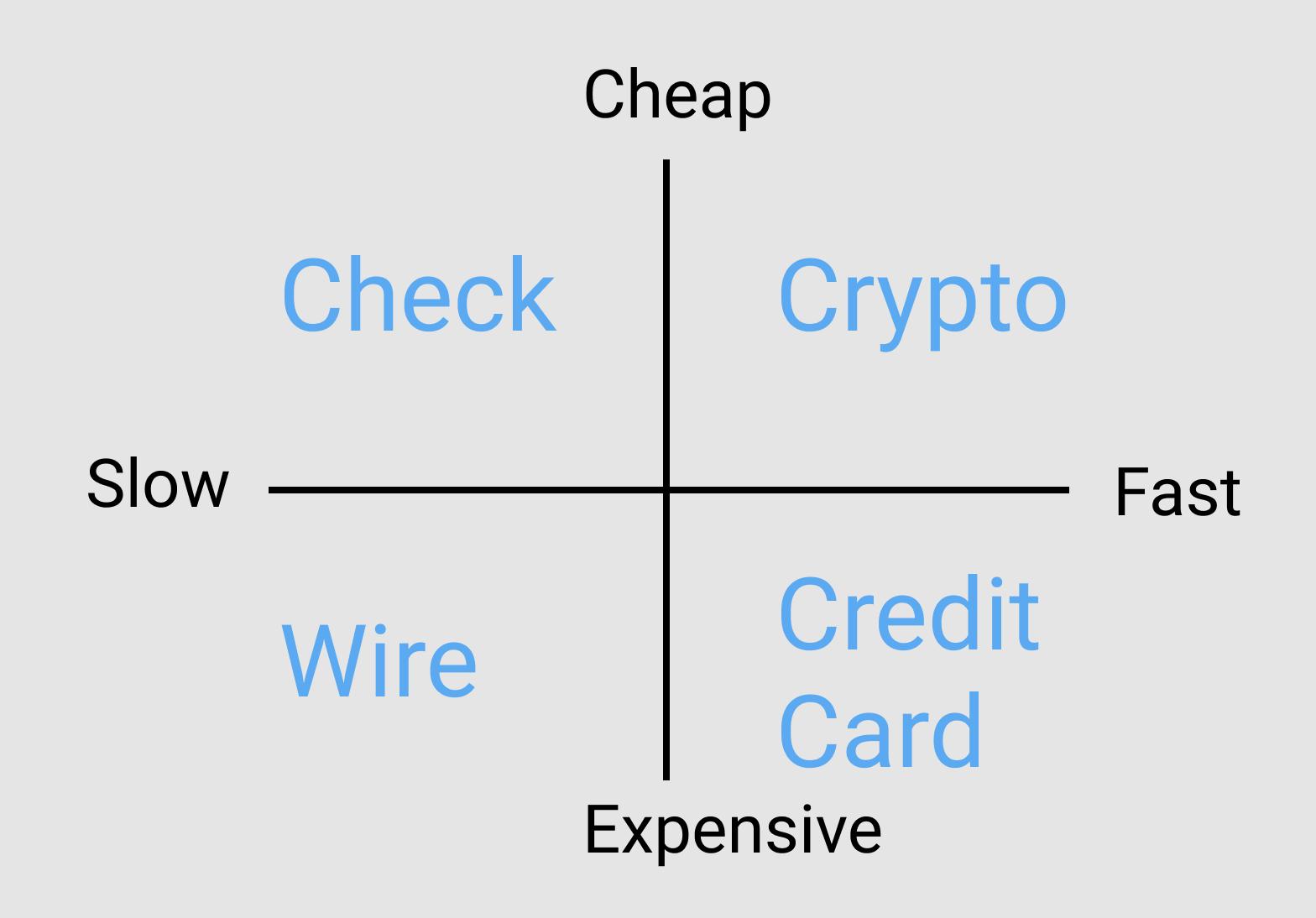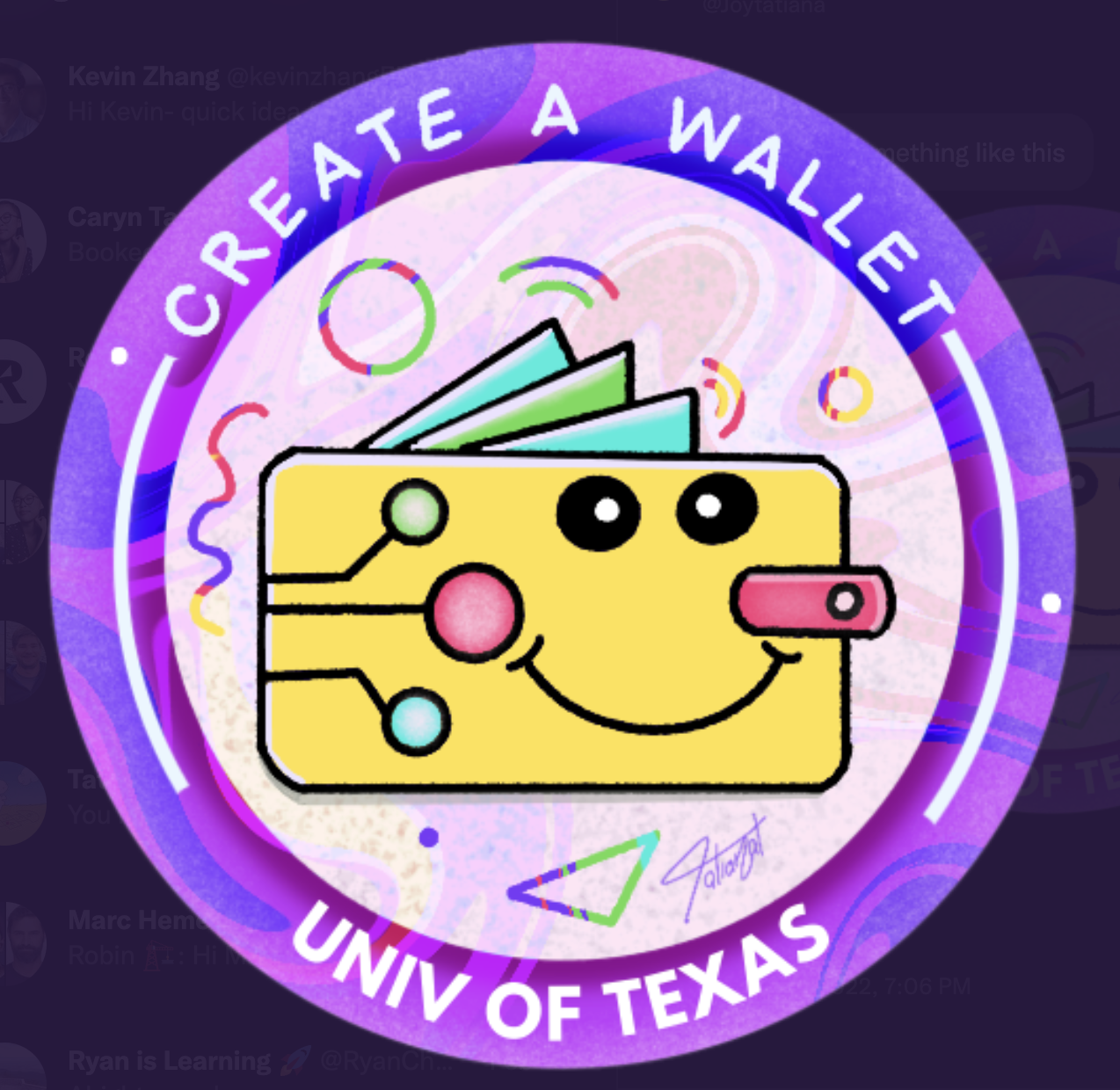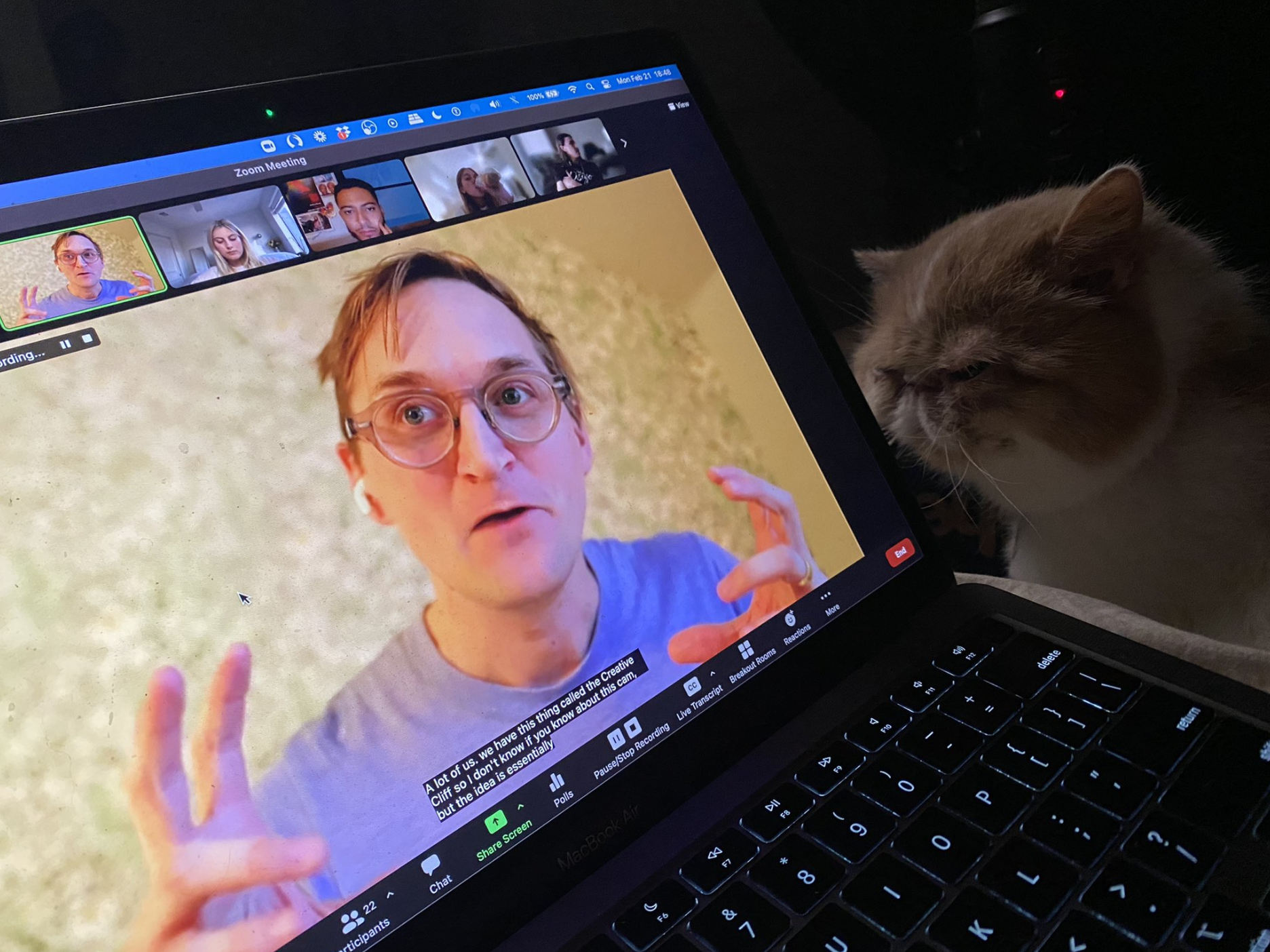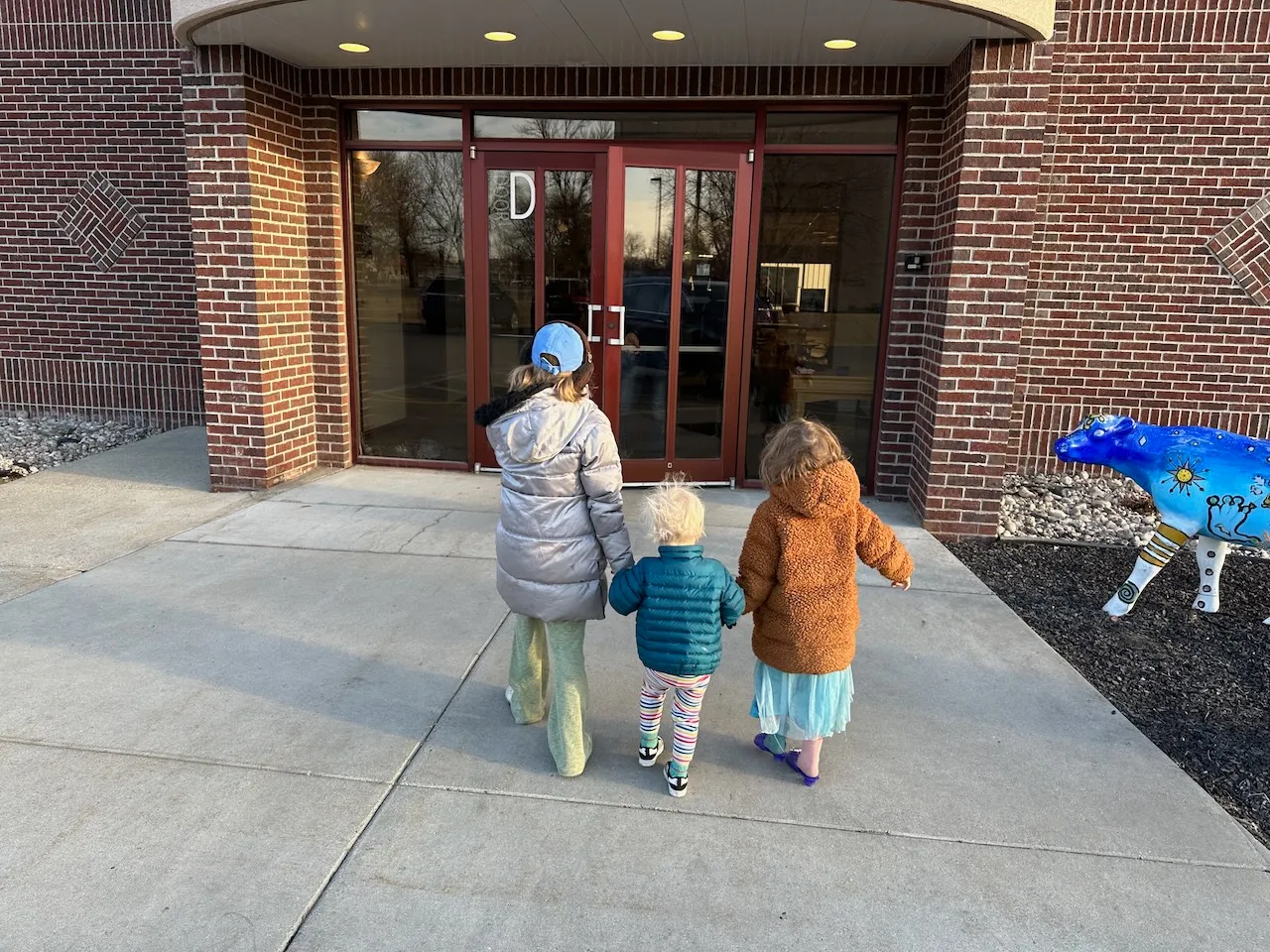Crypto Curriculum - 10 Steps to Teach Web3 in 60 Minutes
Learn to teach students to create a wallet, work in DAOs, use crypto, and earn tokens, all in 60 min.

Table of Contents
Originally published on Mirror.
You can always tell how old someone is based on when they learned to type.
For me, it was freshmen year of high school. The old computer instructor brought out cardboard boxes to hide the keyboard (f-f-f-f, j-j-j-j-j), and we slowly learned the “touch method.”
Today, my kids are already learning to type, early in elementary school.
The same pace of change will happen with web3.
Learning how to create a wallet, connect with communities online (DAOs), accept Internet money (crypto), and earn tokens will be key skills that will start in the most advanced classrooms and slowly work their way down as a core competency for all students.
This important lesson couldn’t come fast enough.
Portable Opportunity
The past week has seen the invasion of Ukraine and over a million people instantly becoming refugees, pouring across the borders in Europe in an echo of the great migrations in the 1990’s and World War II.
GENEVA (AP) — UN refugee agency: 1 million have fled Ukraine since Russia’s invasion, the swiftest exodus of refugees this century.
— Tracy Brown (@tracybrown_dc) March 3, 2022
These Ukrainians are leaving everything behind - homes, personal possessions, even family members.
Also left behind are small, but important things like access to their bank accounts, proof of their experience and education, and the network of support in their communities. As they seek a new start, access to this information is critical.
What if these important details were portable and verifiable, and they could immediately start their education and work right where they left off? In a world where web3 is a core competency, our students will have the freedom of movement, ownership, and opportunity.
Democratizing Web3 Education
Currently, knowledge of web3 is unevenly distributed.
Familiarity with #Web3 concepts / tech. #thinknowmrx #web3 @ThinkNowGlobal pic.twitter.com/3xRQcZiVgD
— Mario X. Carrasco (@marioxcarrasco) February 28, 2022
Web3 has the potential to create opportunities, but it could also exacerbate inequality.
Education is the answer.
By teaching all students core competencies in web3, they have the ability to go deeper and create opportunity for themselves. The portable, verifiable nature of web3 means that this opportunity is available for everyone, regardless of location or background.
Unfortunately, there’s not a lot of web3 education happening, especially in the halls of traditional institutions. Instead, companies like Rabbithole and Buildspace or DAOs like Invisible College are helping people get started. Tellingly, popular courses on Udemy on Ethereum Development and Cryptocurrency Trading were actually built by the Blockchain at Berkeley student club.
The proliferation of training is a positive step, but most of these opportunities presuppose knowledge of a wallet or a curiosity in web3. How does someone who doesn’t even know that web3 exists get started?
The answer is democratizing web3. Just as we brought keyboarding into the classroom so all students could master the foundational skill, it’s time to bring web3 into the classroom.
An Intro to Web3 for the Classroom
The past week, I had a chance to teach web3 to two different online classrooms that could not have been more different: a university entrepreneurship class at the University of Texas at Austin (UT) and a class of 5th graders in India.
Despite their obvious differences, the content and methodology were quite similar. By the end of one hour, both classes had new wallets, were trading tokens and crypto, and were finding opportunities with DAOs.
Based on feedback from the instructors and students, I organized my curriculum on how to best teach web3 in a traditional classroom setting in an hour or less. This curriculum introduces community-led businesses (DAOs), Internet money (wallets + cryptocurrency), and finding job opportunities in web3.
I hope you can take this curriculum, modify it, and use it to prepare the next creation of builders to use web3 to create the future.

Frameworks for Teaching Web3
Entrepreneurs solve problems, and web3 offers new solutions. To take advantage of these new opportunities, entrepreneurs need to learn about web3.
That’s why I was excited to work with student entrepreneurs at the University of Texas in Cam Houser’s class, one of the most innovative entrepreneurship instructors (and entrepreneurs!) I know.
I had a few key ideas coming into the class that I wanted to focus on.
Today's the day!
— Scottdavidmeyer.eth 🌻 (@MrScottMeyer) February 21, 2022
Excited to teach web3 to a @UTAustin course on entrepreneurship.
Here's what I'm going to do (and how you can get my lesson plan): https://t.co/Qhz2TSyyA9
Three key concepts emerged from the course.
1. It’s Not About Web3
Every entrepreneur knows it is not about the tool, it’s about the solution. People want to solve their problems. If you have the best solution, they will want it.
Most learners are not interested in web3 for the technology. They are interested for the impact.
What is possible with trust-less coordination? What is possible with frictionless movement of money? What is possible when global talent is verified and accessible?
With this framework in mind, lessons need to be real-world and avoid jargon whenever possible. It’s good to introduce key terms, but more important is getting students to start using web3 tools.
2. Doing > Discussing
Much of web3 is esoteric. The best way to avoid the muck of details is by getting started with simple examples.
The goal of a one-hour intro is to give students enough of a taste that they could then dive deeper. Having them build experience in web3 is important.
3. We are all Pavlov’s Dogs
We love rewards. It might not be a literal bell with a dog treat, but we want to apply our learning immediately and get a “treat” for doing so. In many courses this means getting a grade on an assignment. For web3, we can do so much better.
As students progress through the class, include rewards. This might be a free reward, like a POAP, or actually sending crypto to students like we did in India. This mini “learn to earn” experience is motivating and eye-opening for students.
With these frameworks in mind, let’s get into the details on how to structure a class and what to teach.
10 Steps to Teach Web3 in 60 Minutes
1. Break the Ice
3 Minutes | Large Group
Teachers are a mix of entertainers and educators. It’s important to keep this balance and keep students entertained.
If you’re 90% instructor & 10% entertainer you’re a college professor.
— Wes Kao 🏛 (@wes_kao) June 27, 2021
If you’re 10% instructor & 90% entertainer you’re a BuzzFeed video.
If you teach a cohort-based course your goal is to create student transformation so aim for 50% instructor & 50% entertainer.
In addition to entertainment, it’s important to build trust and excitement with the students, especially as a guest lecturer. The best way to do this is with an icebreaker.
Yes, I know, an icebreaker! Ah. So annoying. But, it’s true. Unfortunately, icebreakers actually work.
Cheesy icebreakers really do make a difference, according to three papers with controlled experiments:
— Ethan Mollick (@emollick) January 30, 2021
🎶Singing improves group cohesion
😱Telling an embarrassing story improves group creativity
👾 Playing a video games for 45 minutes increases future team performance by 20% pic.twitter.com/UKB4zZQmBr
There are numerous icebreakers that I like using (this course walks through all of them). This video shows some of my favorites.
I used one of my new favorites which isn’t in the video called Peek-a-Boo.
Start by asking students to turn their cameras off - it’s really fun to tell them the opposite of what ever other teacher says.
Then, they turn their cameras on when they want to answer yes to the question. We see who answers yes, turn cameras off, and repeat the process.
I always start with a question everyone will answer yes to. So we ask:
- Are you in an entrepreneurship class? (All cameras go on - look around - cameras off)
- Have you ever sold something online? (Surprisingly high, maybe 60% in my class)
- Do you live in Texas? (Everyone)
- Have you ever started a business? (No one - sadly typical in an entrepreneurship class.)
- Do you have a wallet? (3 out of 25 answered yes)
- Are you excited for class? (Try to get everyone to turn them on)
2. Community-based Businesses
10 min | Small group
We know from the frameworks that it’s not about the tech. To make web3 accessible and less scary, avoid the jargon. Instead, take Aarushi’s advice and connect it with concepts or tools they already know.
Build on previous knowledge so starting with distinction and similarities b/w Web 2 and Web 3.
— Aarushi Singhania (@singhania_aa) February 16, 2022
To introduce the concept of web3 and coordination, I start with Reddit.
Reddit is a great starting point because it is something most of them already know, and it helps students iidentify problems within a community, even if they know nothing about the community.
Using Greg Isenberg’s Unbundling Reddit concept, ask students to:
- Choose a subreddit (I gave them three options if they didn’t have one)
- Find a question or a problem people in the community are discussing
- Identify 5 potential solutions for the problem
- Share what you would need to launch the solution
We know that brainstorming doesn’t work. Instead, use the Brainwrite, Brainstorm, Brainshare method. Students get a few minutes on their own. Then they go to small groups. Then they bring their favorite idea to the large group.
🧠 BRAIN WRITING
— Scottdavidmeyer.eth 🌻 (@MrScottMeyer) October 25, 2020
Before brainstorming, do brain writing.
Give your participants 2 minutes to think and write what they want to add.
Invite them to share it in the chat, breakout, or with the large group.
It increases participation, esp for those less likely to share.
This creates more ideas, enables all to be heard, builds connections within the class, and saves time.
When the students share what they need to launch the solution for their Reddit community, the inevitable answer is money. We need to hire people, buy a building, purchase supplies, etc. That answer is the perfect set-up to dive into DAOs.
3. An Intro to DAOs
8 min | Large group and individual work
This is the first web3 knowledge checkpoint. After students share their solutions, ask the question: what would be possible if these subreddits had banks accounts?
This leads into a natural introduction to DAOs and the ability to coordinate. Share three examples of the big problems these communities can attempt to solve. I introduced Kraus House, LinksDAO, and CityDAO as examples.
Connect what happens on a subreddit - people ask questions and try to help one another - to DAOs. If those Reddit users could coordinate and make money from their work, real change could be made.
With this quick introduction, it’s time to have students do their own DAO exploration.
Students have 3 minutes to go to DAO Central and find a DAO that interests them. Play music in the background while they explore. Then, call on a few students ask what their chosen DAO does and why they found it interesting. This is a great way to showcase DAOs that students could join to continue learning after class.
4. Crypto - AKA Internet Money
6 min | Large group
Time for the second web3 knowledge checkpoint.
Now that students know about DAOs, we need to solve the launch problem. If we want to create a solution, we need money, just like in the Reddit example.
This is where we introduce the idea of cryptocurrency. To keep things simple, I describe crypto as Internet money.
Highlight three core concepts about cryptocurrency:
1. Geographic Independence
Crypto can be sent to someone else regardless of where they live in the world. There are no conversion fees or currency issues. In fact, you don’t even need to know where they live.
2. Frictionless
Crypto is fast and cheap to move. Emphasize this fact by sharing the cost of moving money in the traditional system in terms of time and money. For example:
- Cost of a wire - $50
- Cost of a check - 2-5 days to clear
- Credit Card - 3% transaction fee
- Crypto - ~$.15
This 2x2 helps:

3. Micro-transactions
When money is fast and cheap to move, we can send it for micro-tasks. We could be paid for every 10 minutes we work. We could buy a move ticket and pay for every 15 minutes we stay in the theatre. We could create bounties to have someone perform a small task for our company and pay them immediate.
With frictionless, geographic-agnostic internet money, new types of transactions are possible.
5. The Long Tail
5 min | Large group
Chris Andersson’s classic, The Long Tail, is the essential concept of the Pareto Principle I work into almost every class.
In this case, I use The Long Tail to connect the community-first business idea with Internet money. Here’s how I think about it.
Most businesses make most of their money off of a few things. I always ask if anyone remembers Borders - which they don’t and I get a small chuckle out of that - and use a bookstore to explain the concept. Most people buy just a few of their books - Harry Potter, the Bible, 50 Shades of Grey, etc.
The 80/20 rule can also explain contributions in a group. In most clubs or organizations, a few people do most of the work.
Businesses won’t hire someone if they have one good idea. Instead they hire people who can consistently show up and work on something. The small number of people who do most of the work are the people who get hired. Community-first businesses are different.
Community-first businesses can tap the long tail to get more idea from more people.
These decentralized organizations can access and pay world-class talent, even if it is just for one idea or project. More talent from more contributors give community-first businesses an advantage over traditional businesses.

6. Wallets
8 min | Individual work with group example
Now that students know why web3 matters, it’s time to get them set-up. As we know from our framework, we want to get them started building as soon as possible.
We start with a wallet as that will be their key to unlock opportunities in web3.
The wallet is described as the safe place you keep things. With this in mind, we immediately explain wallet security.
A wallet address is a home address; a secret recovery phrase is your social security number.
You can share your wallet address, but never share your secret recovery phrase. In fact, it’s best to write it down and keep it in a safe place because without it, you will lose your wallet forever.
After we have impressed upon them the importance of security, we set them up with Metamask.
I call on a student and ask if they are willing to share. After we have a volunteer, we confirm that they do not have a wallet.
Then, we have them share their screen and walk through installing the Metamask browser extension. We emphasize that when it comes time for the secret phrase we will stop the screenshare. Then we have the student start creating the account.
Other students are encouraged to do the same alongside of the student. If they have problems, and you have a second instructor, this is a great chance to create a breakout room for individual help.
7. Using the Wallet
5 min | Individual work
Immediately students want to get something with their wallet, the third framework in teaching web3.
The quick and free way to do this is with a POAP. In the case of UT, we had the amazing Tatiana create this POAP (don’t forget - you have to do it ahead of time). Then, the students can claim it and view it. With the Indian students, Tatiana hosted an entire session on designing POAPs with Canva so they could build their own POAPs for their classmates (and maybe become professional POAP designers!).

In the case of the Indian elementary school, we raised funds from an online NFT sale and then distributed Ethereum to each student. The students loved to see the .02 ETH hit their accounts.
With those funds, we helped the students buy an ENS domain. We followed the same process as the Metamask setup, where we had one student showcase and the others do it alongside them. This was a bit difficult for the 5th graders, but we got them all through it in about 15 minutes.
It may not be financially feasible, but sending crypto is a great way to show the ease of transfer. Having them purchase something with the wallet - like an ENS domain - is even better.
8. Connect the Wallet
3 min | Individual work
Learning to login with a wallet is a key skill that prepares students to get involved in web3. We demonstrate this with Rabbithole and Clarity.
We again have a student share their screen. They go to Rabbithole.gg and connect their wallet. We encourage the other students to do the same while they are watching.
At this point, the teacher can explain the concept of signing a contract, which they have to do to connect their wallet. Then it’s on to a quick tour of how Rabbithole can help them learn more about web3. This lays the path for them to dive deeper based on their interest.
We do the same with Clarity, where they login and have access to all the notes from the class.
9. Earn Crypto
8 min | Individual work
Earning money always gets students to sit up, so we next head over to Gitcoin’s quests.
Here they can learn and earn with their new wallet. We give them two minutes to find a quest they are interested in and ask a few students to share.
Then, we repeat the process with Coinbase’s Earn site. This requires an account so we just show them what’s there and move on. With a few simple tasks, they now can go earn crypto.
10. Find a Job
4 min | Individual work
Lastly, we emphasize that it is the early days of web3. With a little bit of time and attention, these students can become leading experts in the space.
In the entrepreneurship class, I framed web3 as a new way to solve problems, which is the heart of entrepreneurship. With younger students, we framed web3 as a new technology that they will be using for many years to come. If they can start now, they will have a head start and find more opportunities.
As a starting point, we look at Gaby’s Web3 Job Board. I like to start here because it shows how web3 is not just a bunch of developer jobs. They can get involved as designers, teachers, community managers, and more. I also share how DAOs are a great place to start as well because you can contribute and then get offered bounties and job opportunities based on your performance.
Wrap Up
With that, we are at the hour. It’s great to build questions into each section and again at the end. While this schedule is tight, it keeps things moving and ensures that students are exposed to key areas in web3.

Educators are Everything
Web3 creates potential solutions to problems facing our world. However, it isn’t a guarantee that this technology will be a force for good. It is up to us to make it so.
More specifically, it is up to teachers to make it so.
As Simone eloquently highlights, it is the teachers who will bring opportunities to our communities. They need to know what web3 is and how to best teach it.
“Educators are everything” - @anay_sim
— SimonΞ (@psykoreactor) March 2, 2022
They are keys to the #rabbithole for @provenauthority and @anay_sim. 🔑 … and many more of us.
Let’s keep @Ed3educators extra safe 🔏 and bring them into the #Eduverse @Ed3DAO #Ed3 @VritiSaraf @TheTechRabbi @EdTechPeck @MrScottMeyer https://t.co/7rvNhwvDir
This web3 curriculum is one way to get started. Fortunately, new opportunities are emerging to help teachers co-create and learn together.
- Ed3 DAO is a great starting place. As a DAO by educators, for educators, you can learn about web3 from other teachers and discuss how to use it in the classroom. The DAO will open soon to the public. In the meantime, you can get started with their k20 Metaverse.
- Invisible College is a great place to learn about web3. While not specifically for educators, watching how they are reimagining a university provides inspiration.
As I finish this article, I’m sitting in a dark room, still using that touch method I learned decades ago. Our children will be doing the same, using their web3 knowledge for years to come (not necessarily in the dark).
It’s up to us to help everyone have equal access to these opportunities through web3 education.
Scott David Meyer Newsletter
Join the newsletter to receive the latest updates in your inbox.



